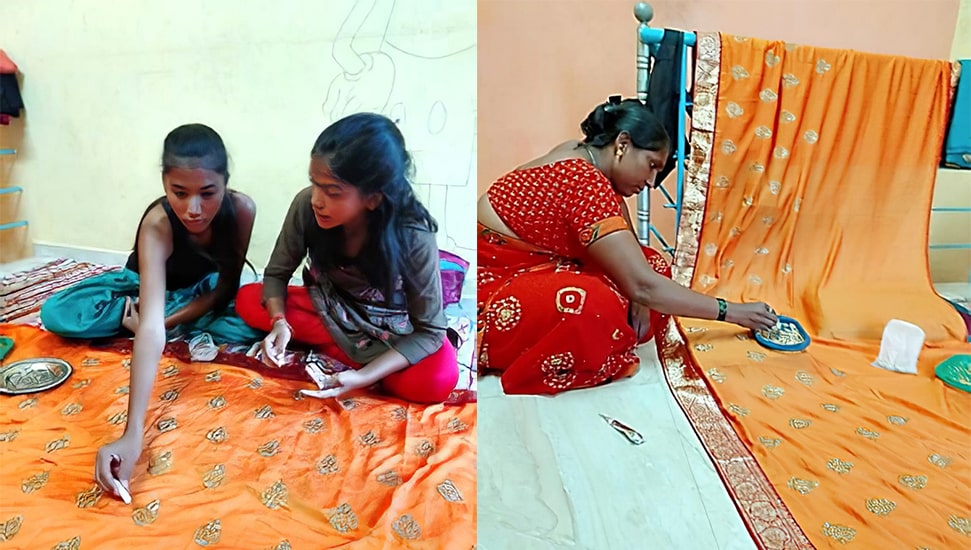At 5,000+ years of existence, the Indian saree is considered to be among the oldest form of garment in the world still in existence. With that rich history, the Saree is an institution in itself. Despite the changes of dynasties and civilisations over the five thousand years, up to the current globalised era, the Saree continues to have a central place in the Indian psyche. Still around, still proudly worn. The saree industry in India sustains the livelihoods of hundreds of thousands of artisans, weavers, printers, embellishers and designers across the length and breadth of the country.
Thirty-eight-year-old Kusum is a sequins embellisher in Nashik. Every day, she walks to the home of the middleman to collect a bunch of sarees and the embellishment materials. It is one kilometre away, so Kusum’s daily on-foot commute is a minimum of 4km — one return journey to pick-up the materials, and a second one to drop off the completed items. Many home based workers like Kusum therefore have zero carbon footprint.
The saree comes pre-embroidered, and Kusum’s task is to put evenly spaced dots of adhesive on these embroidered motifs, immediately followed by carefully pasting the glittering sequins over them. On a usual day, Kusum is slouched over a saree, meticulously performing these two intricate tasks on the 5-metre garment. To keep the saree crease-free, she uses the railing of the staircase in her home to hang half the saree, spreading out the other half on the floor. Each saree takes two days’ worth of work, eight hours each day. Completing sequins embellishment on one saree fetches her Rs. 35 per piece.
Kusum lives in Nashik with her husband (a worker in a company) and her two children (21-year old graduate daughter, and 16 year old son studying in class XI). Her daughter often helps her with sequins embellishment, as well as with domestic chores. In a month, they are able to earn Rs. 1000-1500. They often complain of backaches and eye pain caused by this work on sarees. Children and seniors often help primary home based workers of the household directly in their work, as well as in the unpaid care work. Official definitions of child labour does not include these child home based workers, as they are totally invisible and uncounted.
During COVID-19 related lockdowns, the work came to a grinding halt, and no sarees were being given for embellishment. Kusum and her husband were both out of work. But their monthly costs continued, even increased, due to the newly introduced digital education costs of their children. The payment for Kusum’s work in March was made in August when the production resumed in the garment factory. Kusum reflects on the government’s role, and suggests that it could play a key role in regulating wages in the home based work sector so that ‘the piece-rates are increased.’ From her union, she expects linkages to more livelihood opportunities which could earn her higher incomes.





